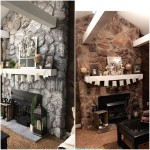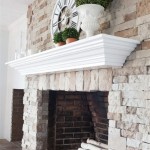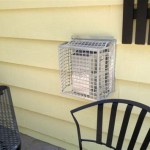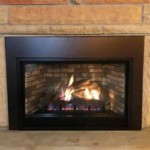Wall Mounted Ventless Gas Fireplaces: A Comprehensive Overview
Wall mounted ventless gas fireplaces represent a modern and convenient heating solution, offering both aesthetic appeal and functional warmth. These appliances are designed to be installed directly onto a wall, saving floor space and providing a focal point within a room. Unlike traditional gas fireplaces that require a chimney or venting system to exhaust combustion byproducts, ventless models utilize advanced technology to burn fuel more efficiently and produce minimal emissions.
The popularity of wall mounted ventless gas fireplaces has grown in recent years due to several factors, including ease of installation, versatility in design, and improved energy efficiency. They are particularly well-suited for apartments, condominiums, and homes where installing a traditional fireplace might be impractical or cost-prohibitive. Understanding the key features, operational principles, and safety considerations associated with these fireplaces is crucial for making an informed decision about their suitability for a specific application.
Key Features and Design Options
Wall mounted ventless gas fireplaces come in a variety of sizes, styles, and finishes, allowing homeowners to choose a model that complements their existing décor. The range of options includes sleek, minimalist designs with clean lines, as well as more ornate models that mimic the appearance of traditional fireplaces. The visual appeal of these fireplaces is often enhanced by realistic flame effects, ember beds, and customizable media options such as decorative logs, glass beads, or stones.
The construction of a wall mounted ventless gas fireplace typically involves a durable steel or metal frame, a ceramic or refractory firebox, and a tempered glass front panel. The control system may include a manual knob, a remote control, or even smart home integration, allowing users to adjust the flame height, heat output, and timer settings with ease. Some models also incorporate safety features such as oxygen depletion sensors (ODS) and automatic shut-off mechanisms, which are designed to prevent carbon monoxide buildup and ensure safe operation.
Furthermore, the design of these fireplaces often prioritizes ease of maintenance. Many models feature removable panels that allow for easy access to the burner assembly and other internal components. This simplifies the cleaning process and ensures that the fireplace can be properly maintained to ensure optimal performance and longevity. The variety of design options allows consumers to select a fireplace that not only provides warmth but also enhances the overall aesthetic of their living space.
Operational Principles and Fuel Efficiency
Ventless gas fireplaces operate on the principle of complete combustion, which means that they are designed to burn natural gas or propane very efficiently, minimizing the production of harmful emissions. The key component in this process is the oxygen depletion sensor (ODS), which continuously monitors the oxygen levels in the room. If the oxygen level drops below a certain threshold, the ODS will automatically shut off the fireplace to prevent the accumulation of carbon monoxide.
The combustion process generates heat, which is then distributed into the room through convection and radiation. Many ventless gas fireplaces feature a built-in fan that helps to circulate the warm air more evenly, increasing the overall heating efficiency. The efficiency of these fireplaces is often measured in terms of British Thermal Units (BTUs), which indicate the amount of heat that the fireplace can generate per hour. The BTU rating of a ventless gas fireplace should be carefully considered in relation to the size of the room that it is intended to heat.
Compared to traditional wood-burning fireplaces or vented gas fireplaces, ventless models are generally more energy-efficient because they do not lose heat through a chimney or vent. This can translate into significant cost savings over time, especially in colder climates where heating costs can be substantial. Additionally, ventless gas fireplaces can be used as a supplemental heating source, allowing homeowners to reduce their reliance on central heating systems and further lower their energy bills.
Safety Considerations and Installation Requirements
While ventless gas fireplaces are designed to be safe and efficient, it is crucial to follow all safety guidelines and installation requirements to prevent accidents and ensure proper operation. The most important safety consideration is to ensure that the room where the fireplace is installed is adequately ventilated. While ventless fireplaces burn fuel efficiently, they still produce small amounts of carbon dioxide and water vapor, which can build up in poorly ventilated spaces.
Local building codes and regulations may dictate specific requirements for the installation of ventless gas fireplaces, including minimum room size, ventilation requirements, and gas supply connection procedures. It is essential to consult with a qualified HVAC technician or gas appliance installer to ensure that the fireplace is installed safely and in compliance with all applicable codes. Proper installation also includes verifying that the gas supply line is properly sized and connected, and that the fireplace is securely mounted to the wall.
Regular maintenance is also essential for ensuring the safe and efficient operation of a ventless gas fireplace. This includes cleaning the burner assembly and pilot light, inspecting the gas supply line for leaks, and ensuring that the ODS is functioning properly. It is also important to install and maintain carbon monoxide detectors in the vicinity of the fireplace, as these devices can provide an early warning of any potential carbon monoxide buildup. By adhering to these safety guidelines and maintenance procedures, homeowners can enjoy the warmth and ambiance of a wall mounted ventless gas fireplace with confidence.
Further points to consider include the placement of the fireplace in relation to other objects. Combustible materials should definitely be kept at the required clearance range as specified by the manufacturer of the appliance. Additionally, families with small children should take extra precautions to prevent accidental contact with the hot surface of the glass panel.

Milan 24 Inch Ventless Wall Mounted Bio Ethanol Fireplace Ew

Vent Free Archives SÓlas Contemporary Fireplaces

What Is A Vent Free Fireplace

Empire Boulevard 30 Inch Slim Line Wall Mounted Recessed Vent Free Gas Fyre Direct

Duluth Forge 28 In 26 000 Btu Ventless Linear Wall Gas Fireplace With Thermostat Black 110037 The Home Depot

Empire Boulevard 30 Inch Slim Line Wall Mounted Recessed Vent Free Gas Fyre Direct

Duluth Forge 28 In 26 000 Btu Ventless Linear Wall Gas Fireplace With Thermostat Black 110037 The Home Depot
:max_bytes(150000):strip_icc()/ventless-gas-fireplaces-4160746-hero-f9d4bdcd9bd446eb84406de306f790ba.jpg?strip=all)
How To Pick Out A Ventless Gas Fireplace

Building A Gas Unvented Fireplace Stunning S Above Is Section Of Modern Fireplaces Ventl Natural Contemporary

Wall Mounted Gas Fireplace Black Frame Lava Fires
Related Posts








